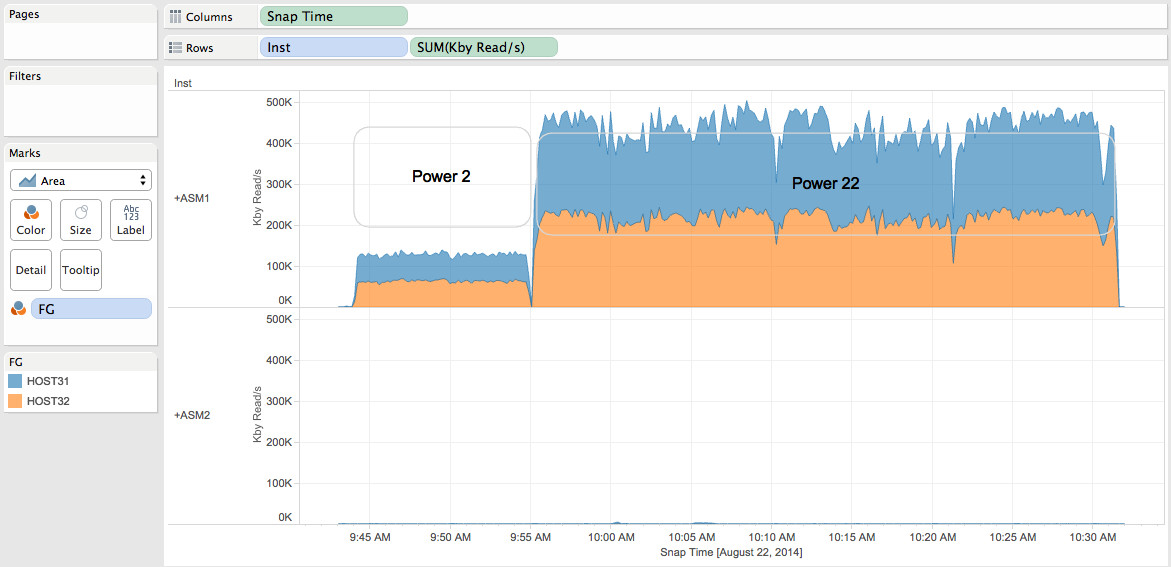Introduction:
If I add disks into a diskgroup, then during the rebalance operation, ASM needs to read the data coming from the disks already part of the diskgroup to rebalance them on all the disks (including the new ones).
Question:
If I add 2 disks (one into each failgroup) is the preferred feature took into account for the rebalance process? (“for” means “for the reads generated by the rebalance operation”).
Let’s see:
- Set the preferred read on +ASM1 (so that +ASM1 “prefers” to read from the “HOST31” failgroup):
SQL> alter system set asm_preferred_read_failure_groups='DATA.HOST31';
System altered.
- Add 2 disks (one into each failgroup) into the DATA diskgroup (connected on +ASM1):
SQL> alter diskgroup DATA add failgroup HOST31 disk '/dev/san/HOST31CA8D0D' failgroup HOST32 disk '/dev/san/HOST32CA8D0D';
Diskgroup altered.
- Check that the ASM compatibility is high enough (>=11.1) to use the preferred read feature:
SQL> select COMPATIBILITY from v$asm_diskgroup where NAME='DATA';
COMPATIBILITY
------------------------------------------------------------
11.2.0.2.0
- Launch the rebalance:
SQL> alter diskgroup DATA rebalance power 2;
Diskgroup altered.
Now, let’s collect the ASM metrics that way and visualize the result with Tableau.
Note: During the rebalance near zero database activity occurred so that near 100% of the activity is coming from the rebalance process.
Result:

As you can see:
- The +ASM1 instance reads from the HOST31 and the HOST32 failgroups: It did not take into account the preferred read.
- I changed the power during the rebalance just for the fun ;-)
Remark:
It has been tested on a 11.2.0.4 extended RAC (Still need to test on 12c).
Conclusion:
- The ASM preferred read feature is not took into account for the rebalance process.
- I guess it is still took into account for the reads coming from the databases during the rebalance process.